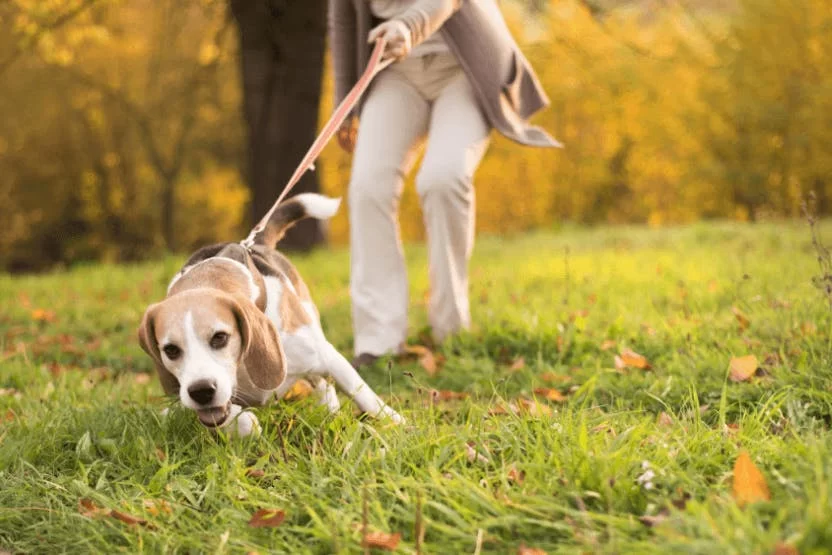How to Train Your Dog to Stop Pulling on the Leash During Walks
As a dog owner, nothing can be more frustrating than taking your dog for a walk, only to have them pull constantly on the leash. I’ve been there, and I know how challenging it can be. Over the years, I’ve learned the ins and outs of training a dog to stop pulling, and I want to share these effective techniques with you. Whether you have a puppy or an adult dog, these methods can help you both enjoy your walks together.
1. Understanding Why Dogs Pull on the Leash
Before jumping into the training methods, it’s essential to understand why your dog might be pulling on the leash in the first place. From my experience, dogs pull because they are excited, curious, or eager to get to a specific destination. It’s instinctual behavior, especially if they are trying to explore their surroundings. But pulling on the leash isn’t just frustrating – it can also lead to health issues for both you and your dog, such as neck strain or shoulder problems.
1.1 The Role of a Dog’s Energy
High-energy dogs, especially younger ones, tend to pull more because they have a lot of pent-up energy. When I first started walking my dog, I noticed that she would pull to the point of exhaustion because she was so excited about the new smells and sights around her. Understanding her behavior helped me tailor my approach to walking, and that’s when the real training began.
2. Choosing the Right Equipment
One of the first steps I took to solve the pulling issue was selecting the proper equipment. A regular collar can sometimes encourage pulling because it applies pressure on a dog’s neck. From my experience, using a harness or a head collar can help prevent your dog from pulling without causing discomfort. These tools can redirect your dog’s attention and give you more control during walks.
2.1 The No-Pull Harness
A no-pull harness is a game-changer when it comes to leash training. I found that using this type of harness made a significant difference in how my dog behaved during walks. It discourages pulling by applying gentle pressure on the chest when the dog pulls forward. The first time I used it, I noticed my dog was much calmer and walked more slowly and steadily.
2.2 The Head Collar
Another tool I found useful was the head collar. It’s similar to a halter for horses but designed for dogs. When I first used it, my dog resisted, but over time, she became accustomed to it, and it helped prevent her from pulling on the leash. By controlling her head, I was able to guide her movements and make walks more enjoyable.
3. Using Positive Reinforcement
Training my dog to stop pulling on the leash was never about punishment. Instead, I used positive reinforcement techniques that rewarded good behavior. I quickly learned that when my dog walked beside me without pulling, I needed to reward her immediately, either with treats or praise. Positive reinforcement is a powerful tool because it helps create a connection between the desired behavior and a reward, making it more likely for the dog to repeat it.
3.1 Rewarding Calm Behavior
Every time my dog walked without pulling, I’d stop, give her a treat, and offer lots of praise. This taught her that calm walking equals a reward. Over time, she learned that pulling would get her nowhere, but walking calmly next to me meant rewards and praise. Consistency is key with this method, and I made sure to always reward good behavior, no matter how small the progress.
3.2 The “Stop and Go” Method
One method I used frequently during training was the “stop and go” technique. This involves stopping in your tracks every time your dog starts to pull and waiting for them to return to your side before moving forward again. It requires patience, but I found that after a few repetitions, my dog began to associate pulling with stopping, and it helped reduce her desire to pull.
4. Teaching Your Dog to Walk at Your Pace
Another key aspect of leash training is teaching your dog to walk at your pace. Dogs tend to pull because they are either ahead of you or trying to get somewhere faster. I made sure that my dog understood the importance of walking at a steady pace alongside me. One technique that worked was walking slowly and encouraging my dog to follow. When she matched my pace, I rewarded her with treats and praise. Over time, this created a rhythm that we both enjoyed.
4.1 Consistency Is Crucial
It’s essential to be consistent with your pace and training. I found that if I allowed my dog to pull sometimes but corrected her at other times, it confused her and delayed progress. Consistency in both pace and rewards ensured that she learned what was expected of her. We established a routine that made walks enjoyable and peaceful.
5. Using Training Leashes and Tools
In addition to the harness and head collar, I also invested in a long training leash. This allowed me to give my dog more freedom while still having control. A long leash is especially useful when training in open spaces, such as parks, because it gives your dog the room to roam while you maintain control. I’ve used this tool during our training sessions, and it’s made a big difference in improving her leash skills.
5.1 The Right Length for Training
The length of the leash is crucial for effective training. I recommend a leash that’s at least 15 feet long, which provides enough space for your dog to explore without pulling too far ahead. By using a long leash, I was able to let my dog explore but still give her gentle guidance when needed. It gave her the freedom she craved while also helping her stay close enough for me to redirect her if she started pulling.
6. Gradual Training and Patience
Training a dog to stop pulling takes time, and I can’t stress enough how important it is to be patient. During the first few weeks of training, my dog still tried to pull, and I had to constantly remind her to stay beside me. I made sure to keep training sessions short and fun to prevent frustration. Over time, the progress was clear—she began to walk more calmly and at my pace.
6.1 Avoiding Frustration
One challenge I faced was avoiding frustration when progress seemed slow. I remind myself that training takes time and that every small victory is worth celebrating. It’s important to remain calm and not punish your dog for making mistakes. The goal is to encourage the desired behavior, not to force it. When you train with patience and consistency, you’ll both get the results you want.












